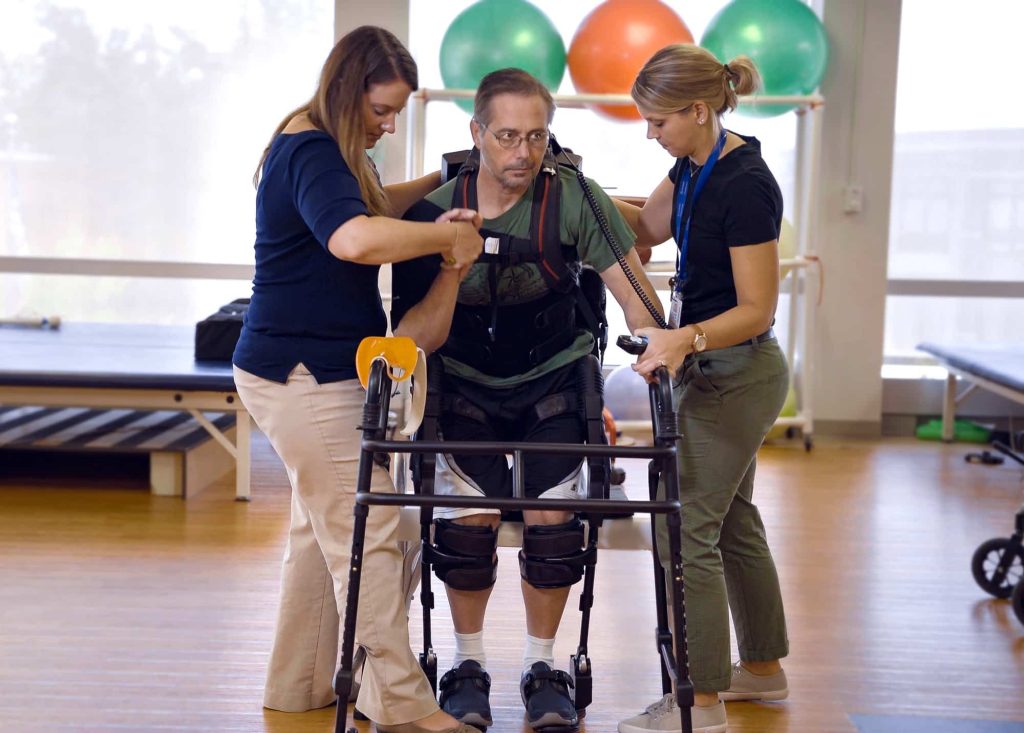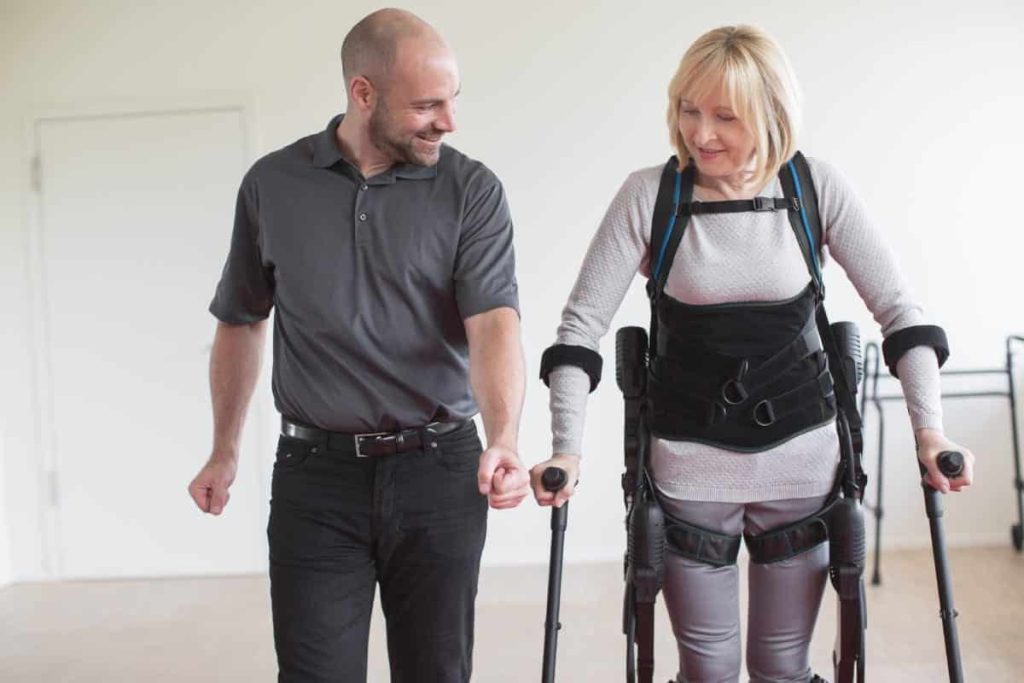Having a stroke is a serious matter and can result in a major shift in your quality of life. A stroke occurs when something interferes with the blood supply to your brain —a blood clot blocking blood flow (and, therefore, oxygen) to the brain or a blood vessel rupturing. As a result of this pause in blood flow, certain brain areas can find themselves starved of oxygen, and cells can start to die rapidly. This is why, if you notice someone with slurred speech, stumbling, or unable to raise both arms to an equal height, it’s imperative to call 911 immediately. The longer a person’s brain is without oxygen, the more functions that will be impacted.
With all that being said, stroke recovery (either partial or full) is possible, a mainstay of modern medical treatment. With over 795,000 Americans suffering a stroke each year, physical therapists are familiar with the various impacts a stroke can have on a patient, whether the stroke they’ve suffered is ischemic, hemorrhagic, or a TIA (transient ischemic attack). Most patients are, in fact, referred to physical therapy in order to address deficits resulting from the stroke. These symptoms encompass a wide range depending on how long the brain was deprived of oxygen. Patients may experience everything from limb function impairment to paralysis that necessitates a wheelchair. Whatever symptoms a patient is experiencing, it’s exciting to know that there are advances being made in physical therapy technology and stroke recovery every day.

Handling Fatigue and Building Endurance
Fatigue is a common issue during stroke recovery. One of the reasons people recovering from a stroke can have fatigue is because, a stroke’s effects are applied to a patient’s limbs or muscle groups asymmetrically, causing them to walk unevenly or otherwise compensate for a muscular or sensory deficit with other muscle groups. It’s far harder to carry your body’s entire weight on one leg, for example, which is why many people who have had a stroke experience fatigue.
Beyond the simple exhaustion of uneven weight carriage, though, it can also be dangerous to compensate in this way. Patients can injure themselves by putting too much pressure on areas of the body that aren’t built for it. This is why it’s important to begin intervention and treatment by a physical therapist with advanced tools before a patient gets too accustomed to using their body in a way that will cause further injury. One such tool is an exoskeleton, which can provide relief and extra support to a limb that needs it. Exoskeletons aren’t like the prosthetics you may imagine – the kind that replaces limbs lost by amputees. Instead, the exoskeleton is worn on a limb and has motors at the hip and knee that automatically turn down or increase the assistance of the device in relation to a patient’s current capabilities. This allows patients to exercise their weaker side without overdoing it. By using these “wearable robots”, a therapist can help build up walking ability and endurance, for example, and achieve a functional outcome tailored to the specific type of injury that a diagnostic team has identified during their assessment. Increased motor control leads to increased quality of life, and that can go a long way towards recovery.

Spinal Cord Stroke
In some cases, a blood clot or other obstruction will cut off blood flow to the spinal cord instead of to the brain, causing the spinal cord to be without oxygen. This is called a spinal cord stroke, and it is just as dangerous as ischemic, hemorrhagic, or TIA strokes. The longer the spinal cord lacks a connection to the brainstem and the rest of the body, the more likely it is that a patient will see the onset of paralysis.
Clinicians will usually diagnose a spinal cord stroke by administering an MRI (magnetic resonance imaging) scan to understand exactly where the issue is along the spinal cord and the most effective treatment plan. Here, a bionic leg or other exoskeleton devices, such as EksoNR which has been pioneered by Ekso Bionics, can be useful in regaining some of the functions that may have been lost when the spinal cord stroke occurred.
Having a stroke doesn’t have to be the end of life as you’ve known it, even if you find yourself with a disability or impairment. Clinicians are very positive about the potential impacts that the bionic “wearable robot” Ekso Bionics offers can make when it comes to patient care and intervention. Even though it may seem like a long haul towards increased motor control and even walking again, the truth is that it may be closer than you believe it to be. The very human capacity to overcome and innovate is leading the charge towards increased recovery. Across the U.S., physical therapists are already using robotics and equipment to advance functional abilities.
Contact Ekso Bionics
Who knows what tomorrow will bring? With these kinds of advances in medical technology, it’s an exciting time to be working in stroke recovery. To learn more about the newest knowledge afforded by exosuits and how they can help, reach out to the Ekso Bionics team today.
